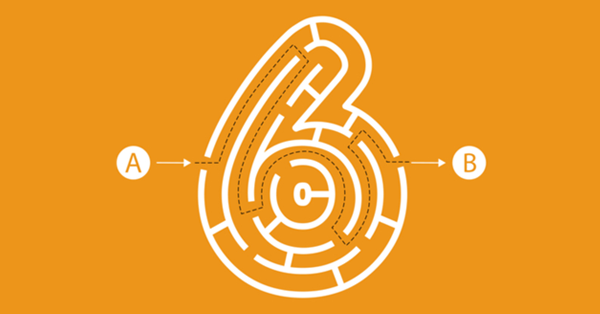Advertising is deeply intricate — both marketers and consumers have more data, channels, and technologies to choose from than ever before. Unfortunately, most marketers don't know how their customers feel about advertising, according to Forrester.
Marketers often get caught up in all the objectives they are trying to accomplish but struggle to understand which types of advertising catch their audience’s attention.
This stems from a variety of factors, the issues most often being:
Time
The first is time, which is a twofold challenge. It takes a lot of time to conduct research, synthesize it, and then act on it. Also, trends, channels, and technologies are changing so rapidly that as soon as you have marketing and advertising based on your research, the market has shifted.
Trends
Another factor that interferes with figuring out what matters to consumers is when brands dabble in all the hot marketing trends instead of staying true to what they know works for them. There's nothing wrong with trying new methods, but brands need to choose them wisely.
Tailoring
And it's vital that advertisers personalize messaging. Consumers expect sellers to understand their needs and communicate solutions that address them. In fact, according to a 2018 Adobe survey, two-thirds of consumers feel like it’s essential for brands to adjust messaging to ensure it's relevant to them.

CONNECTING WITH CUSTOMERS
6 Steps to Understand + Connect with Customers
Understanding how brands can engage consumers is critical to success. Here are six steps marketers can take to help them understand and connect better with their customers:
1. Preference Center
Create a preference center for customers.
For a brand to truly understand its target audience, it must do a deep dive into understanding current customers. You need to know who they are, what motivates them to buy, and what type of purchasers (impulsive or conservative) they are.
An excellent way to start is by creating a preference center for current customers. The center should give consumers options for how they receive communications from you (email, social media, texts), how often you should contact them, and the types of information they want. Then, you can flag preferences in your customer relationship management system to honor their requests. This allows customers to have control over how they engage with your company.
2. Study Behaviors
Study behaviors of prospective customers.
Next to understanding your current customers is knowing how prospective customers view and consume information about your brand.
At the direct marketing level, for example, you’re likely trying to spur action with an offer. At this level, marketers should have a good grasp of consumer communication preferences. Study past behavior to see how they engage with your brand, messaging, and marketing communications so you know when to communicate and the best content to send.
3. Evaluate Data
Evaluate your data and personalize it.
Consumers want personalized marketing that references their experiences, so marketers must be sure their messages are relevant. The best way to do this is to ensure clean customer data. That is, are you collecting the right information and using it wisely?
For example, if you’re a travel specialist and you just helped a client plan a trip to England, advertising a trip to England while he is making the trip isn’t the best use of the data you have. Evaluate the audiences you’re speaking to and the desired action you want them to take. Does it align? Will you harm your relationship if you send the wrong advertising message?
4. Direct Targets
Focus your budget on targets you can reach directly.
If a lawn care company is trying to sell next season’s service to existing customers, it might use email as long as its current customers have opted into the channel. However, if that same lawn care company is marketing its service to prospects as part of an acquisition campaign, email would be the wrong route. Data shows that people are unlikely to engage with email when they don’t know the sender or haven’t opted into receiving communications from that sender.
For this and similar reasons, focus your budget on targets you can reach directly, with offers and simplified messaging designed to engage. Don’t point your budget toward email marketing when your consumers haven’t opted in, and ensure your messaging is reaching the right target audience on the right channel.
5. Assignment Selling
Use assignment selling.
Today’s buyers research purchases to an incredible extent. And they trust messaging from other buyers' experiences, online reviews, and social input from friends more than a salesperson, company website, or advertisement.
Buyers tend to distrust the cluttered advertising environment unless the information can help them make a smarter purchase. Some B2B companies deploy a tactic called assignment selling in which they ask prospective clients to do a little homework and provide more information before engaging with them extensively.
For example, some companies require their prospects to complete a questionnaire that benchmarks buyer needs and lists the seller's best-customer characteristics. This process acknowledges the buyer's power in the transaction and takes advantage of a prospective customer's need to discover the best fit for their problem on their own.
6. Test + Repeat
Test, measure return on investment, repeat.
The top indicator for future performance is past results. Marketers need to test different message combinations and track engagement and sales. They should also calculate the cost of engagement and sale and the return on cost.
All of this hinges on the goal of the campaign. You might measure the effectiveness of an awareness campaign by impressions, eyeballs, recall, and maybe even open rate. But a lead generation campaign is measured by efficiency to drive sales conversions. From a marketing activity perspective, you might measure the campaign effectiveness by leads and conversions yielded by way of clicks, purchases made with an offer code, form submissions, phone calls, and visits.
As a marketer, one of the most crucial aspects of your job is knowing your audience. Once you understand them, you can make meaningful connections. That will help you choose the best channels and deliver effective campaigns.
This article was originally published in MarTech Advisor.
Interested in learning more?
FEATURED ARTICLEDiscover the benefits of knowing your target audience with BKM Marketing's [6] Tips to Boost Marketing Response blog series. This 7-part series kicks off with the importance of understanding your audience, which not only delves into the countless benefits of understanding your audience, but it also features expert advice and first-hand experience on the best ways to do so according to BKM Marketing's seasoned marketing specialists. Get started with Understand Your Audience >> |
[FREE] DOWNLOADABLE GUIDEWith so many options available to access information today it is important to know how to reach consumers efficiently. The sheer volume of information bombarding us is overwhelming - it is far too easy to get lost in the weeds! Cut through the clutter with our latest white paper Augmenting Digital Marketing with Direct Mail complete with expert advice, new tactics, strategies, case studies, and [6] Tips to Boost Response Rates direct from BKM's team of seasoned experts. Download your free Augmenting Digital Marketing >> |
BKM Marketing's content is made with our audience in mind. Our downloadable PDF guides are free
to save, search, share, reference, or print at their convenience. Visit our Resource Library to see more >>





SUBMIT YOUR COMMENT